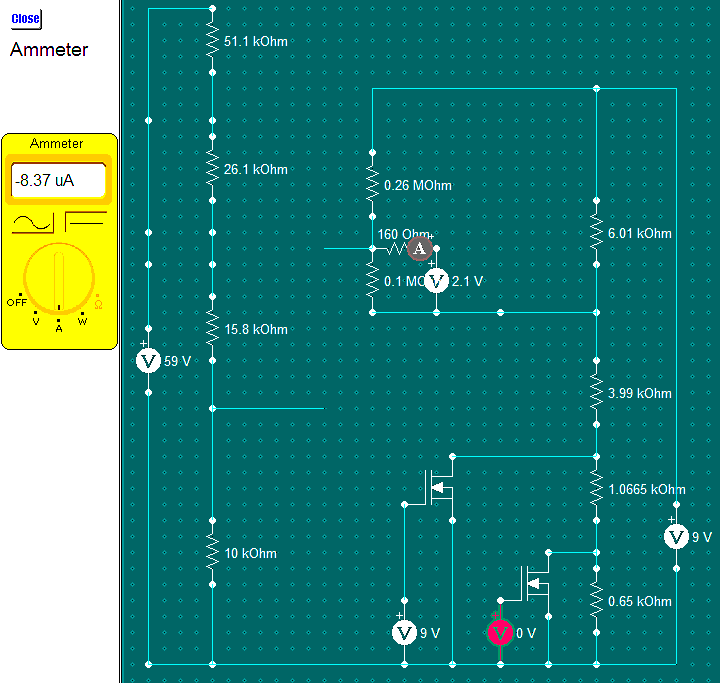This is really a reply to this post:
I used 4v at the opamps inputs. LM61. Using 400 ohms output.
15v, R1 = 73.33k, R2 = 22.66k, Temp sensor 4k at 0c 4.000 volts opamp inputs.
With 0.8 or 20'c, Vbat = 14.415v for 4v
with 1v or 40'c, Vbat = 13.84v for 4 v.
If calibrated for 20'c first the error would be half. Or only 20mv total!
I went up thread to get some room...
That's nearly identical to what I came up with (but yours is a little closer!)
I used a 5.75k R at the temp sensor because I thought if it were unplugged or failed it would be safer to simulate a higher temp. I think 5.75k is 20 or 25c. Given that, I lowered R2 a little to compensate... I still get about .1v error from "ideal" if I run the the voltage and temperature range. I imagine that's good enough!
The design, however, has an intrinsic non-linearity. I see that because if you divide the input and output voltage of the battery divider you get (about) 3.6x but if you look at the incremental voltage step on the output seen by raising or lowering the voltage you get 4.1x I feel like I've been chasing numbers around for two days trying to get the best fit to the curve.
This...

... floats a sensor on the "fixed" side with the charging references so it does not have that issue. I believe that its accuracy is only limited by the available values for the fixed resistors. Using in-stock 1% resistors from Digikey, I get an error typically 34mv or less across all voltages and a worst case 60mv for a 48v system. I know that you haven't been keen on floating the temperature sensor and I'm not sure why... in this case the LM19 only draws 10uA so I don't think it'll load the divider network it's riding on.
I'm not sure however, whether the output of the lm19 is sourcing or sinking. The spec says it'll source 1uA and sink 16uA.. I think I have it sinking about 8 uA (Worst case is at the cold end when its output is about 2.1 volts)
Is this a bone head idea? (I know I've been hanging on to the idea of floating the temp sensor like a dog with a bone!)
Thanks again!
- Ed.